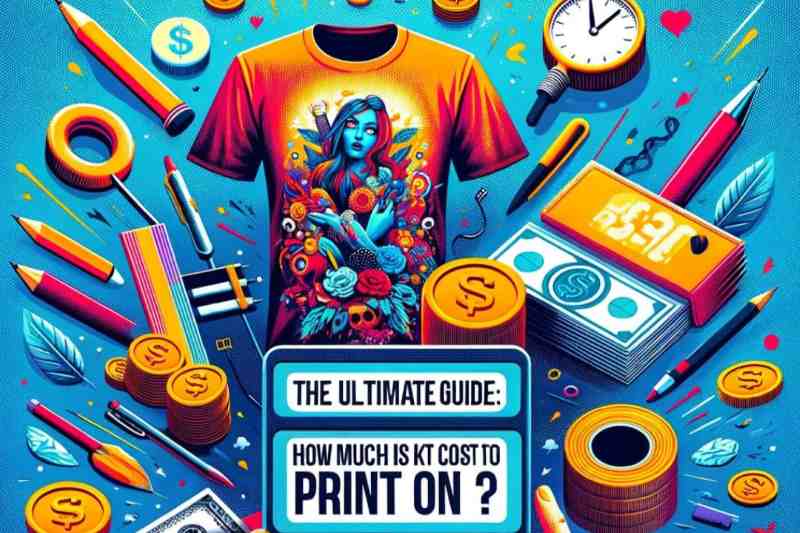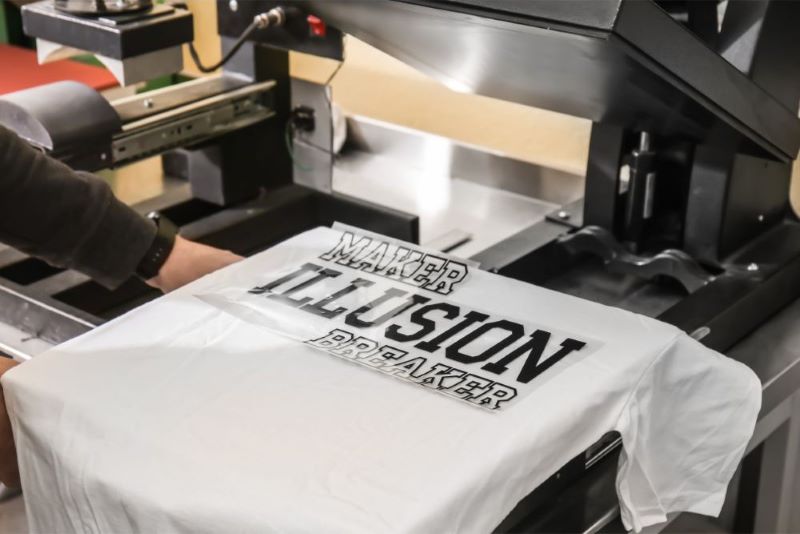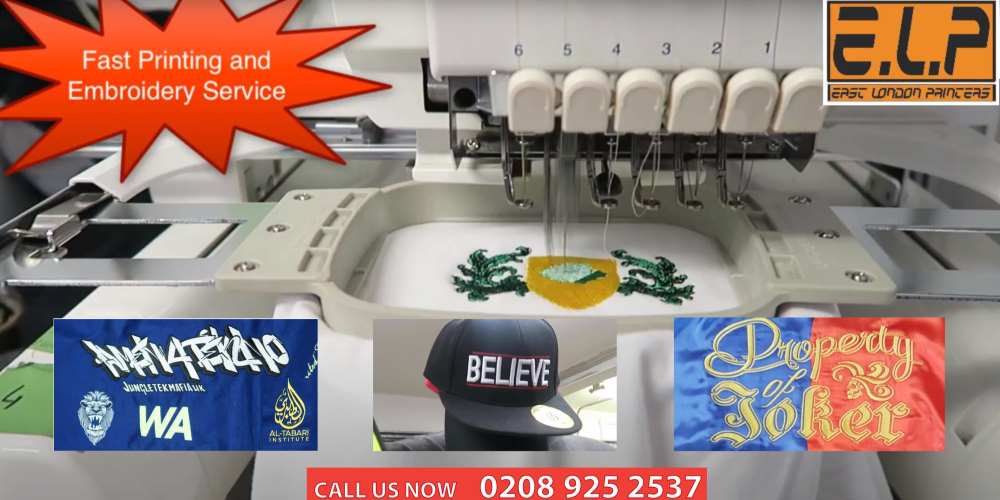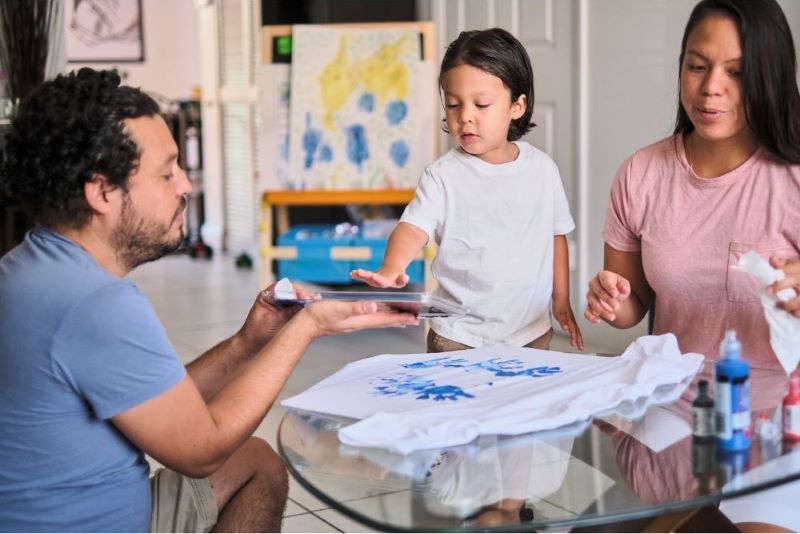Are you considering printing custom shirts for your brand or event? It’s important to know exactly how much it will cost before diving into this exciting venture. In this comprehensive guide, we will break down the costs associated with printing on a shirt, giving you a clear understanding of what to expect.
From the selection of the shirt itself to the printing method, there are several factors that can influence the overall cost. We will explore different types of printing techniques, such as screen printing, direct-to-garment (DTG) printing, and heat transfer, assessing their pros and cons and how they impact your budget.
Additionally, we will discuss the various factors that influence the pricing, including the type of fabric, the complexity of the design, the number of colors, and the quantity of shirts being printed. Armed with this knowledge, you’ll be able to make informed decisions that best align with your budget and aesthetic preferences.
Whether you are a small business, a non-profit organization, or an event planner, understanding the real cost of printing on a shirt is essential for a successful project. Let’s dive in and demystify the world of custom shirt printing costs.
Factors that Affect the Cost of Printing on Shirts
When it comes to printing on shirts, there are several factors that can influence the overall cost. Understanding these factors will help you make informed decisions and ensure that you stay within your budget.
The first factor to consider is the selection of the shirt itself. The cost of the shirt will vary depending on the brand, quality, and type of fabric. Higher-end shirts made from premium materials will generally cost more than basic cotton shirts. Additionally, certain fabrics may require special printing techniques, which can add to the overall cost.
The complexity of the design is another important factor. Intricate and detailed designs will require more time and resources to print, which can increase the cost. Designs with multiple colors will also be more expensive to print, as each color requires a separate screen or printing process.
The quantity of shirts being printed is another key factor. Printing in bulk often results in lower costs per shirt, as the setup and preparation costs are spread out over a larger quantity. However, if you only need a small number of shirts, the cost per shirt may be higher.
Different Printing Methods and Their Costs
There are several different printing methods available for printing on shirts, each with its own pros and cons and associated costs. Let’s explore some of the most common methods:
1. Screen Printing: Screen printing is a popular and cost-effective method for printing on shirts. It involves creating a stencil (or screen) for each color in the design and then pressing ink through the screens onto the shirt. This method is best suited for designs with fewer colors and larger quantities of shirts.
2. Direct-to-Garment (DTG) Printing: DTG printing is a newer technology that allows for high-quality, full-color printing directly onto the fabric of the shirt. It is a great option for designs with intricate details and multiple colors. However, DTG printing can be more expensive than screen printing, especially for larger quantities.
3. Heat Transfer: Heat transfer involves printing the design onto a special transfer paper and then using heat to transfer the design onto the shirt. This method is best suited for small quantities and designs with many colors. However, heat transfer may not be as durable or long-lasting as other printing methods.
It’s important to consider the specific requirements of your design and budget when choosing a printing method. Each method has its own cost considerations that can impact the overall price.
Determining the Quantity for Printing
Determining the quantity of shirts to print is a crucial step in managing the cost of your project. Printing in bulk can often result in significant cost savings, as the setup and preparation costs are spread out over a larger quantity of shirts. However, it’s important to strike the right balance between quantity and demand.
If you are unsure of the demand for your shirts, it may be wise to start with a smaller quantity and gauge the response before committing to a larger print run. This will help you avoid excess inventory and potential losses. On the other hand, if you have a high demand for your shirts, printing in bulk can help you take advantage of economies of scale and reduce the cost per shirt.
Additional Costs to Consider
In addition to the printing costs, there are several other factors that can impact the overall cost of printing on shirts. These may include:
1. Setup Fees: Some printing companies may charge a setup fee for each design or color. This fee covers the cost of preparing the screens or files for printing.
2. Artwork Preparation: If your design requires extensive artwork preparation or modifications, some printing companies may charge an additional fee for these services.
3. Shipping and Handling: If you are ordering shirts from a printing company located far from your location, you may need to factor in shipping and handling costs.
4. Specialty Inks and Finishes: If you want to add special effects such as metallic or glow-in-the-dark inks, or if you want to add additional finishes like embroidery or applique, these can increase the cost of printing.
Before finalizing your order, make sure to inquire about any additional costs that may apply to your specific project.
Comparing Prices from Different Printing Companies
When it comes to printing on shirts, it’s always a good idea to shop around and compare prices from different printing companies. Prices can vary significantly depending on factors such as location, equipment, and expertise.
Reach out to multiple printing companies and provide them with your design specifications, quantity, and any additional requirements. Request detailed quotes that include all costs, including setup fees, artwork preparation, and shipping. Take the time to carefully review and compare these quotes to find the best balance between price and quality.
Tips for Reducing the Cost of Printing on Shirts
If you’re looking to reduce the cost of printing on shirts, consider the following tips:
1. Simplify Your Design: Opt for a simpler design with fewer colors to reduce printing costs.
2. Choose Less Expensive Fabrics: Consider using basic cotton shirts instead of premium fabrics to save on costs.
3. Print in Bulk: Printing in larger quantities can help you take advantage of lower cost per shirt.
4. Avoid Rush Orders: Rush orders often come with additional fees, so plan ahead to avoid these costs.
By implementing these strategies, you can effectively reduce your printing costs without compromising on the quality of your shirts.
DIY vs. Professional Printing: Cost Comparison
When deciding whether to print your shirts yourself or hire a professional printing company, it’s important to consider the cost implications.
DIY printing may initially seem like a cost-effective option, as you can avoid setup fees and potentially save on labor costs. However, it’s important to consider the time, equipment, and expertise required to achieve professional-looking results. DIY printing can be time-consuming and may result in lower-quality prints if not done correctly.
Professional printing companies have the equipment, expertise, and resources to produce high-quality prints efficiently. While the upfront cost may be higher, professional printing can save you time and ensure a professional finish.
Consider your budget, time constraints, and desired quality when deciding between DIY and professional printing.
Case Studies: Real-Life Examples of Printing Costs
To provide you with a better understanding of the costs involved in printing on shirts, let’s explore a few real-life examples:
1. Small Business Promotion: A small business wants to print 100 shirts with a simple, one-color logo. They opt for screen printing and choose basic cotton shirts. The total cost comes to $500, including setup fees.
2. Non-Profit Fundraiser: A non-profit organization plans to print 500 shirts for a fundraising event. They choose a design with multiple colors and opt for DTG printing. The total cost comes to $2,500, including artwork preparation fees.
3. Event Merchandise: An event planner wants to print 1,000 shirts with a complex design featuring metallic inks. They choose heat transfer printing and premium fabric shirts. The total cost comes to $6,000, including additional finishes.
These examples demonstrate the range of costs that can be associated with printing on shirts and highlight the importance of understanding your specific requirements and budget.
Conclusion: Finding the Right Balance Between Cost and Quality
When it comes to printing on shirts, understanding the real cost is essential for a successful project. By considering factors such as the selection of the shirt, printing methods, quantity, and additional costs, you can make informed decisions that align with your budget and aesthetic preferences.
Remember to compare prices from different printing companies, explore cost-saving strategies, and carefully evaluate the pros and cons of DIY versus professional printing. By finding the right balance between cost and quality, you can create custom shirts that effectively represent your brand or event without breaking the bank. So, go ahead and embark on your shirt printing journey with confidence!
Now that you have a comprehensive understanding of the costs involved in printing on shirts, you can confidently move forward with your project. Happy printing!




